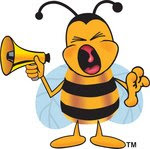
Cicada is an insect of the order Hemiptera, suborder Auchenorrhyncha, in the superfamily Cicadoidea.
Physical Appearance:
- Large eye apart on the head and usually transparent
- well-veined wing
- membranous front wings
- short antennae protruding between or in front of the eyes
The adult insect, sometimes called an imago , is usually 2 to 5 cm (1 to 2 inches ) long, although some tropical species can reach 15 cm (6"), e.g. Pomponia imperatoria from Malaysia.
After mating, the female cuts slits into the bark of a twig, and into these she deposits her eggs. She may do so repeatedly, until she has laid several hundred eggs. When the eggs hatch, the newborn nymphs drop to the ground, where they burrow. Most cicadas go through a life cycle that lasts from two to five years. Some species have much longer life cycles up to 13-year life cycle depends on their species.
The insects spend most of the time that they are underground as nymphs at depths ranging from about 30 cm (1 ft ) up to 2.5 m (about 8½ ft). The nymphs feed on root juice and have strong front legs for digging.
In the final nymphal instar , they construct an exit tunnel to the surface and emerge. They then moult (shed their skins), on a nearby plant for the last time and emerge as adults. .

This picture shows the abandoned skins remain, still clinging to the bark of trees. I took these pictures during the fieldwork at Ulu Bendul, Negeri Sembilan, Malaysia.

There are so many exoskeleton of Cicada after the molting process.

I got a young cicada at the tract of Ulu Bendul Waterfall.
Cicada molting

















































